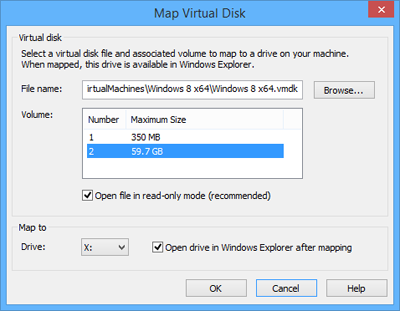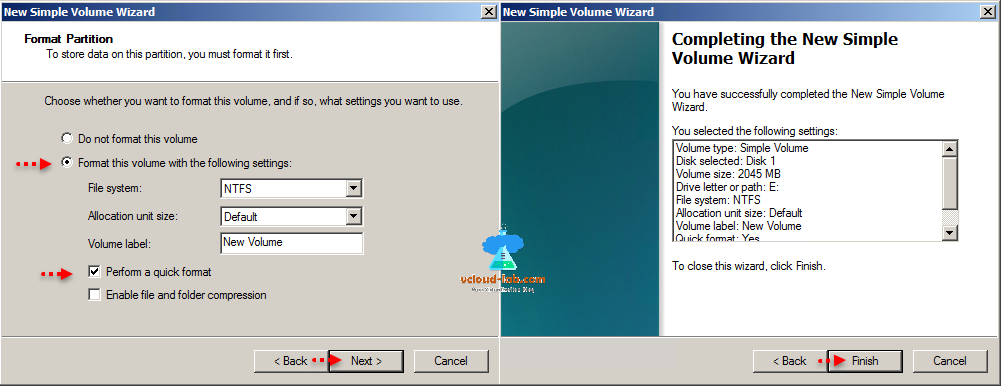

With VMFS5, you can have RDMs larger than 2TB, but only when the RDM is in physical compatibility mode. Though it is important to note, if a VM with a RDM in virtual mode is cloned, the contents of the RDM lun is copied into a vmdk (as the raw lun itself cannot be cloned by a host). Because of this, virtual compatibility mode enables you to use features such as snapshots and cloning. As far as the guest operating system is concerned, it operates in exactly the same way as a vmdk on a VMFS volume. Virtual Compatibility Mode virtualises all SCSI commands between the virtual machine and the storage device. This includes VM snapshots, cloning and storage vMotion. The downside is that you cannot perform certain VM management functions on disks configured in physical mode. A physical mode RDM also allows for Physical to Virtual clustering. An example of a SAN application that requires a physical mode RDM is NetApp’s SnapManager suite.
#Esxi virtual disk map software
This can be useful when running SAN management software inside a virtual machine, as SAN management agents tend to need direct access to the device, without having the SCSI commands intercepted by the host/virtualised. The host passes all SCSI commands, with the exception of the REPORT LUNS command, directly to the storage device. Physical Compatibility Mode means that there will be minimal SCSI virtualisation of the mapped device. There are two modes in which you can configure an RDM Virtual Compatibility Mode and Physical Compatibility Mode, seen here in the virtual machine settings when adding an RDM: A virtual machine reads the mapping file, then subsequently sends it’s read and write requests directly to the raw LUN.

This mapping file acts as a proxy for the physical device and contains metadata used for managing and redirecting access to the raw disk. A mapping file is created, and is referenced in the VM’s configuration file, which points to the raw LUN.

You could think of an RDM as a symbolic link from a VMFS volume to a raw LUN.
#Esxi virtual disk map windows
This LUN can then be formatted with any file system, such as NTFS for Windows virtual machines, which removes the need for creating a VMFS datastore and storing a virtual disk (vmdk) on it. If the disk size matches the requirements described in Recommended VMware vSphere Hypervisor Server Specifications and the disk provisioning setting is Thick Provision Lazy Zeroed, click Finish.An RDM, or Raw Device Mapping, is a mechanism for giving a virtual machine direct access to a LUN. The Ready to Complete page displays the disk details for verification. Leave the default settings on the Advanced Options page (the Virtual Device Node should be SCSI(0:1)), and then click Next.įigure 6 Add Hardware Wizard, Advanced Options See Recommended VMware vSphere Hypervisor Server Specifications.įigure 5 Add Hardware Wizard, Create a Disk On the Create a Disk page, set the Disk Size to the correct requirements for your virtual appliance version. On the Select a Disk page, select Create a new virtual disk, and then click Next.įigure 4 Add Hardware Wizard, Select a Disk On the Device Type page of the Add Hardware wizard, select Hard Disk, and then click Next.įigure 3 Add Hardware Wizard, Device Type On the vSphere client, navigate to the deployed virtual appliance, right-click on it, and select Edit Settings.įigure 2 Virtual Machine Properties, Add Hard Disk You are here: VMware vSphere Hypervisor (ESXi) Installations > Installing ClearPass on an ESXi Virtual Appliance > Add a Hard Disk to the ESXi Virtual Appliance Add a Hard Disk to the ESXi Virtual Applianceįor disk size requirements for the different ClearPass models, see Recommended VMware vSphere Hypervisor Server Specifications.


 0 kommentar(er)
0 kommentar(er)
